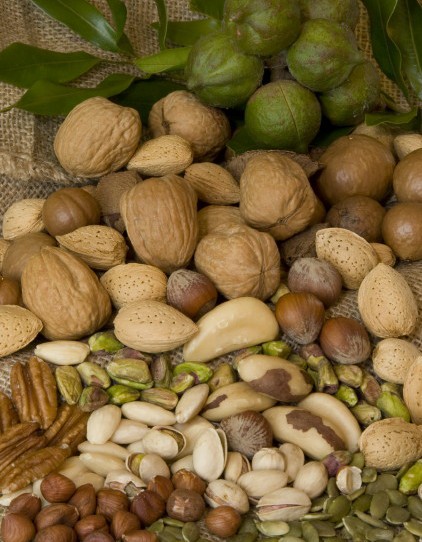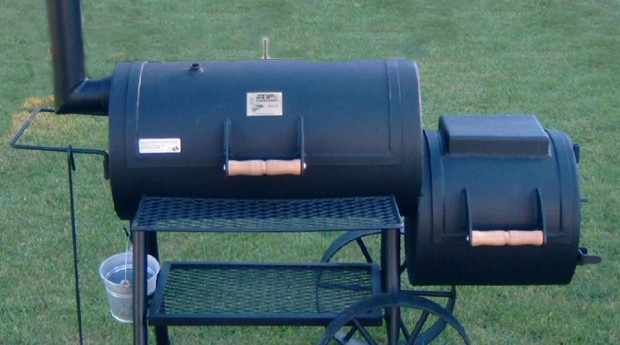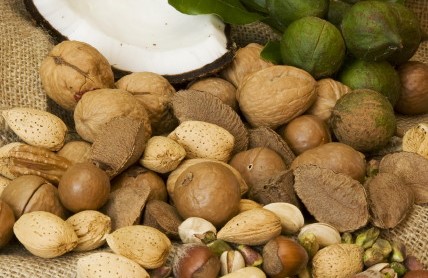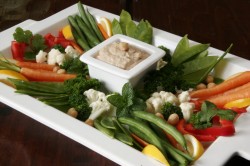A Healthy Kitchen: Springtime Promise
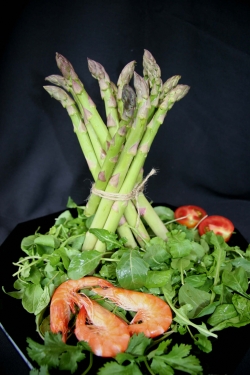
Yesterday it snowed. Today the warm sun drew me outdoors in a sleeveless shirt. Tomorrow is predicted to bring a torrential downpour. And the wind has howled all week. Welcome to March, a month of wildly variable weather. One day we are still in the clutches of winter. The next day we are warmed with the promise of spring.
March is named, appropriately enough, for Mars, the Roman war god. There is certainly something belligerent about the intensity of the weather. Fortunately, spring officially arrives with the vernal equinox on March 20.
This time of agricultural rebirth is a harbinger of all the fresh, nutritious foods to come, many still slumbering deep in the soil. March is the time of hope and renewal, of daylight and springtime, of the promise of clear skies and warm weather. For some of us, that means upping the intensity of our workouts and enjoying the outdoors while we do it.
The warming and greening of our surroundings also encourages us to shift our eating habits: from the heavier, warming winter foods that kept the cold at bay to fresher, lighter more cleansing fare. We have come to an end of the winter squash and root season, and it is still too early for most spring vegetables. Fortunately, all is not lost—our diet is brightened by the appearance of early-ripening greens like arugula and the sturdier stalks of asparagus.
Pungent, peppery arugula, actually a member of the radish family, has high amounts of calcium, vitamin C and beta carotene (an important antioxidant phytochemical). Arugula, also known as “rocket,” is, in fact, higher in these nutrients than all the other well-known salad greens such as romaine, escarole, watercress and red leaf. It is also categorized within the cruciferous vegetable group known for their cancer fighting properties. Aside from its high nutritional value, arugula is very low in calories (low-calorie and nutrient-dense, a win-win food!). Two cups of arugula supply about 25 calories, with zero fat. Of course, just like other salad greens and fresh vegetables, it supplies us with many other vitamins and minerals vital to our health.
Past generations have venerated the stalks of asparagus as scepters of Venus. But to eat asparagus solely for its supposed aphrodisiac would be to overlook its sublime flavor and nutritional clout. One half cup of cooked asparagus contains 22 calories. That same half cup provides 2.9 grams of protein. Also present in significant amounts are vitamin A, folate and potassium, along with trace amounts of B vitamins, copper and zinc. Asparagus are delicious simply steamed and then drizzled with olive oil and lemon juice. Dress them up for guests by wrapping them with a thin slice of smoked salmon. In Europe, it’s considered perfectly polite to eat the stalks with your fingers.
Spring and all it represents tempts us back into our kitchens with renewed creativity. If you shop at a market that offers fresh, regional items, you can really attune yourself to what’s growing locally. At many different levels, springtime is a new beginning. In spring, all of nature renews, rises and expands. Plants move upward, sprouting and blossoming, and a feeling of freshness flows through everything. So why not extend spring’s fresh start to the way we eat? This is the perfect time to take a fresh look at our eating habits.
Spring floods the earth with sunlight. In many parts of the world, the most tell-tale mark of spring is the color green. More sun means more chlorophyll—a key component in plants that allows them to harvest the sun’s energy. Spring is a time of lightness, and light is the key to spring cuisine: lightly cooked, lightly processed and lighter in calories.
Bon appétit!
WARM ARUGULA (ROCKET) SALAD WITH SHRIMP
This is a wonderful, high-protein but light main dish. Look for small, tender arugula leaves.
3 large bunches arugula, washed, dried and tough stems removed
3 tablespoons extra-virgin olive oil
1 pound shelled and deveined shrimp
2 clove garlic
3 plum tomatoes, diced
1 tablespoon each of chopped fresh basil and oregano
2 tablespoons chopped flat-leaf parsley
1-2 tablespoons red wine vinegar, to taste
Pinch of red pepper flakes (optional)
Arrange arugula on a platter. Heat 2 tablespoons of the oil in a skillet until almost smoking. Add the shrimp and stir-fry for 3 to 4 minutes, or until the shrimp are opaque and firm. Add the garlic, tomatoes, herbs, vinegar and red pepper flakes, if using, and cook, stirring, 1 to 2 minutes. Remove from heat, stir in remaining oil and season with salt and pepper and a splash more vinegar, if desired. Spoon the shrimp and hot dressing over arugula and serve immediately.
Serves 2 to 3
ROASTED ASPARAGUS WITH ANISE SEEDS
When buying asparagus, look for unblemished bright green stalks with closed, compact tips. Avoid those with woody stems. To remove the tough end, simply hold the stem end firmly in one hand and bend the stalk over with the other. The asparagus will snap at the natural dividing line between toughness and tenderness. Anise seed provides an unlikely but absolutely delicious licorice accent to the asparagus.
1/2 teaspoon anise seeds
1 pound asparagus, trimmed
1 tablespoon extra-virgin olive oil
Preheat oven to 450°F.
In an electric coffee/spice grinder or with a mortar and pestle, grind anise seeds finely.
Cut asparagus diagonally into 2-inch pieces. In a shallow baking pan large enough to hold asparagus in one layer, toss with anise, olive oil, and salt and pepper, to taste. Roast asparagus in middle of oven, shaking pan occasionally, until crisp-tender and golden, 5 to 8 minutes.
Serves 2
Updated February 10, 2015
- Posted March 19, 2007
© Copyright 2006-2025 Take The Magic Step®. All Rights Reserved.
